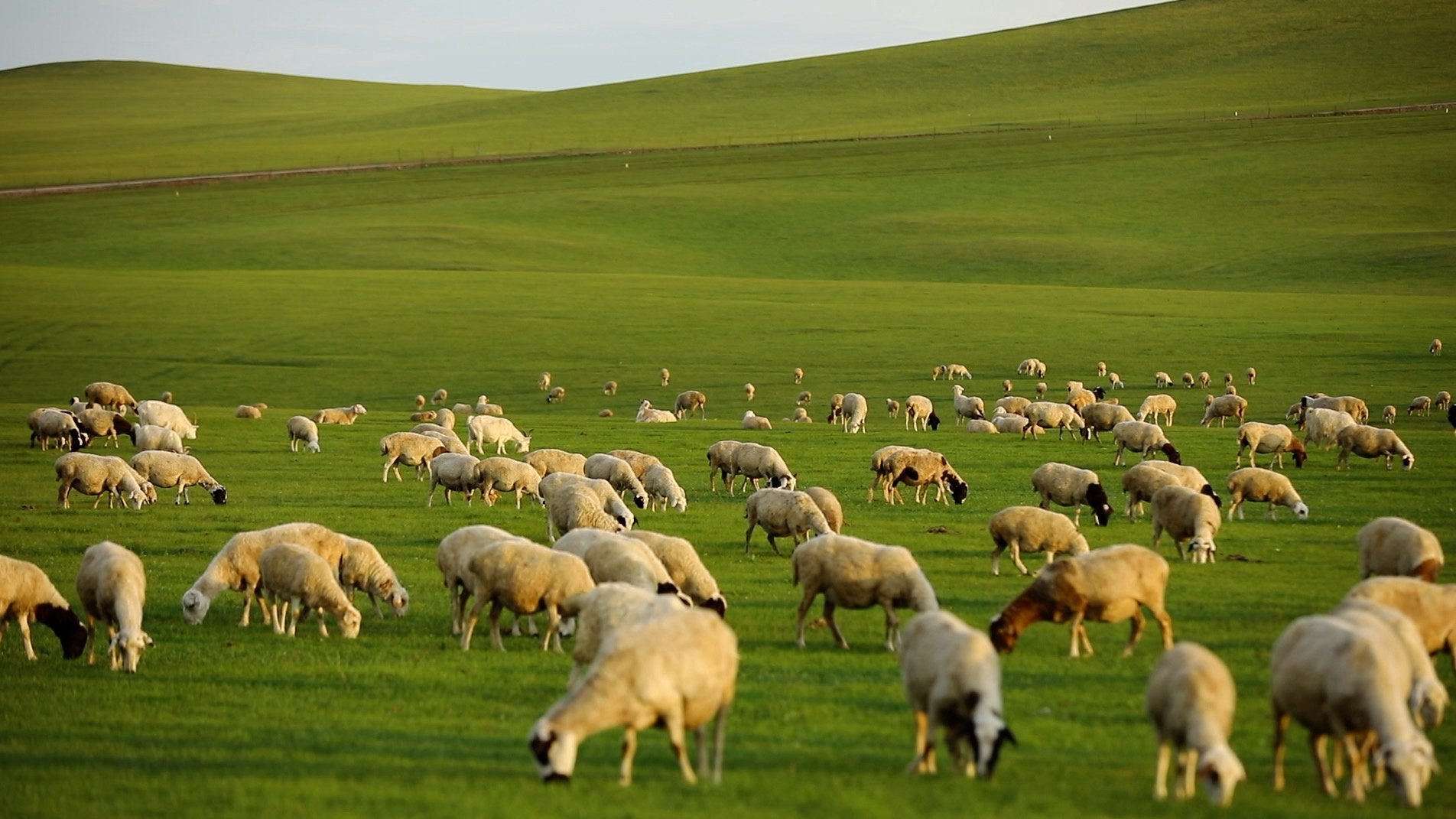

Hulunbuir Grassland is widely seen as China's most well-preserved grassland. With more than 120 kinds of pastures, it holds the name for "the purest grassland." It got that name thanks to ongoing preventive efforts against destruction.
The 46-year-old herdsman Badema knows all too well how drought and overgrazing once ruined pastures and her earnings. Now she works on a cooperative farm with 30 other households. And things are getting better under collective management of grazing intensity, and rotational grazing.
Alatanbagen, chairman of the husbandry company that runs the cooperative farm, said cooperative production mode enhances the people's awareness of environmental protection and sustainable grazing. "It prevents the destruction of meadows while improving the quality of mutton. So herdsmen's incomes grow while the amount of stocks is restrained," he added.
Herding is not the only industry that is closely bound to this fertile land. Late in the 20th century, Hulunbuir Grassland saw a boom in open-pit mining. Thousands of small coal mines left countless scars on the surface of the grasslands, as Inner Mongolia gradually grew into China's biggest coal producer. It became the darkest time for the region's greenery.
Baorixile town, which was established for mining development, once suffered from that. "But low-productivity small coal mines were shut down by 2004. Most of them have switched to other businesses," said the locals. Apart from that, Hulunbuir authorities have committed to pasture upgrading, desertification prevention and the construction of a nature reservation. That has cleared away some of the bare land while making new development paths.
But in the past decade, as the fame of the Hulunbuir Grassland spread across the world, a rising number of tourists has put new pressure on grassland protection, bringing tourist money but also tire tracks and garbage.

Morigele River/ CGTN Photo
Old Barag Banner situated in the heartland of the great grassland has launched a series of campaigns to keep touring vehicles and illegal building away from their gorgeous landmark – the Morigele River. Public construction has also been set up to deal with increasing food waste and domestic sewage.
"Spatial planning draws a clear line between what to exploit and what to protect. Based on that, there should be detailed categorization for each industry, laying out how to develop in a way that matches with our local features," said Yang Aijun, the deputy mayor of Old Barag Banner. He gave an example that the banner is now developing a grass industry cluster whereby stock farming and technological studies grow together, which raises both their profile and income.
It is a universally critical issue for the fast-growing country – how to achieve a balance between environment and growth. And Hulunbuir people choose to safeguard China's ecological barrier in the North and exploit the green gold mine.
(If you want to contribute and have specific expertise, please contact us at nature@cgtn.com.)

Copyright © 2018 CGTN. Beijing ICP prepared NO.16065310-3
Copyright © 2018 CGTN. Beijing ICP prepared NO.16065310-3